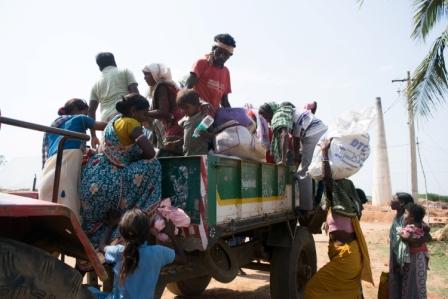Bhubaneswar: With Odisha reclaiming its position as the go-to destination for cheap labour, human traffickers from the state are adopting new and smarter methods to migrate children, men and women right under the authorities’ noses.
While a vigilant State Police, Government Railway Police (GRP) and Railway Protection Force (RPF) are trying to clamp down on trafficking, middle men are tutoring the victims on body language and asking them to dress in their best wear to transport the victims to the destination state.
“The victims are trapped into a vicious debt circle when these middlemen pay an ‘advance’ ranging from Rs 20,000 to Rs 60,000 to meet their critical emergencies or settle their previous debts. In exchange of the money, the victims sign in to work for the ‘Sardars’ in unknown locations till their debts are cleared,” a source working with a private NGO explained.
After luring them into the debt trap, the next step for these traffickers is to move the victims to the destination site, possibly one of the thousands of brick kilns in the southern states. To avoid the prying eyes of cops, the victims are picked up as early as 4 am and ferried to the railway stations. In case, they suspect a raid or check, the victims are put in ‘mandaps’ (large venues usually meant for wedding functions) where they wait till the apprehensions are cleared. “They are taught answers to the Frequently Asked Questions (FAQs). Very often they are asked to say that they are going to attend a wedding function of a relative or to attend an ailing relative,” said Ashish Deep, a social worker working on human trafficking. With the cops raiding the trains more frequently looking for suspects, the traffickers are gradually opting for buses or even helping the labourers board the trains from lesser-known stations.
“We have even come across cases, where the traffickers buy air bags for the victims so that their cloth sacks do not invite unwanted attention of the cops,” Dipti Manhira, another social worker, said.
According to a report by India Country Assessment Report on anti-human trafficking, West Bengal, Andhra Pradesh, Karnataka, Maharashtra, and Odisha are common source areas for trafficking to red-light areas across India. Children are the worst affected.
Earlier this month, Odisha’s Labour and Employees’ State Insurance Minister Sushant Singh informed the media that the Labour Department had helped rescue 1,387 migrant labourers from Odisha working in different states.
The department has issued as many as 2,741 licenses to contractors in 2018-19 fiscal for engagement of 1,28,348 people as migrant workers in different parts of the country.
Among the most cases of labourers rescued, the victims are largely from western part of Odisha. As per government records, of the 1,28,348 registered migrant labourers going outside in search of work, 77,687 hail from Bolangir district alone.
Experts have suggested that many of these labourers come from rural areas with agricultural background. They are forced to migrate due to losses suffered in farming, mostly triggered by irregular climate patterns, environmental degradation and lack of irrigation facilities.
“When I was a child, my father used to grow enough for all of us—a family of six. We had enough to eat all year round and used to sell the extra paddy, pulses and vegetables that were left over from the season. But the climate has changed so much and the production has decreased. I am unable to ensure two square meals a day for my three-member family. I was forced to migrate with my family and was held captive by the owner for four months until the government rescued me,” narrated Damru, a bonded labour survivor from Nuapada.







































